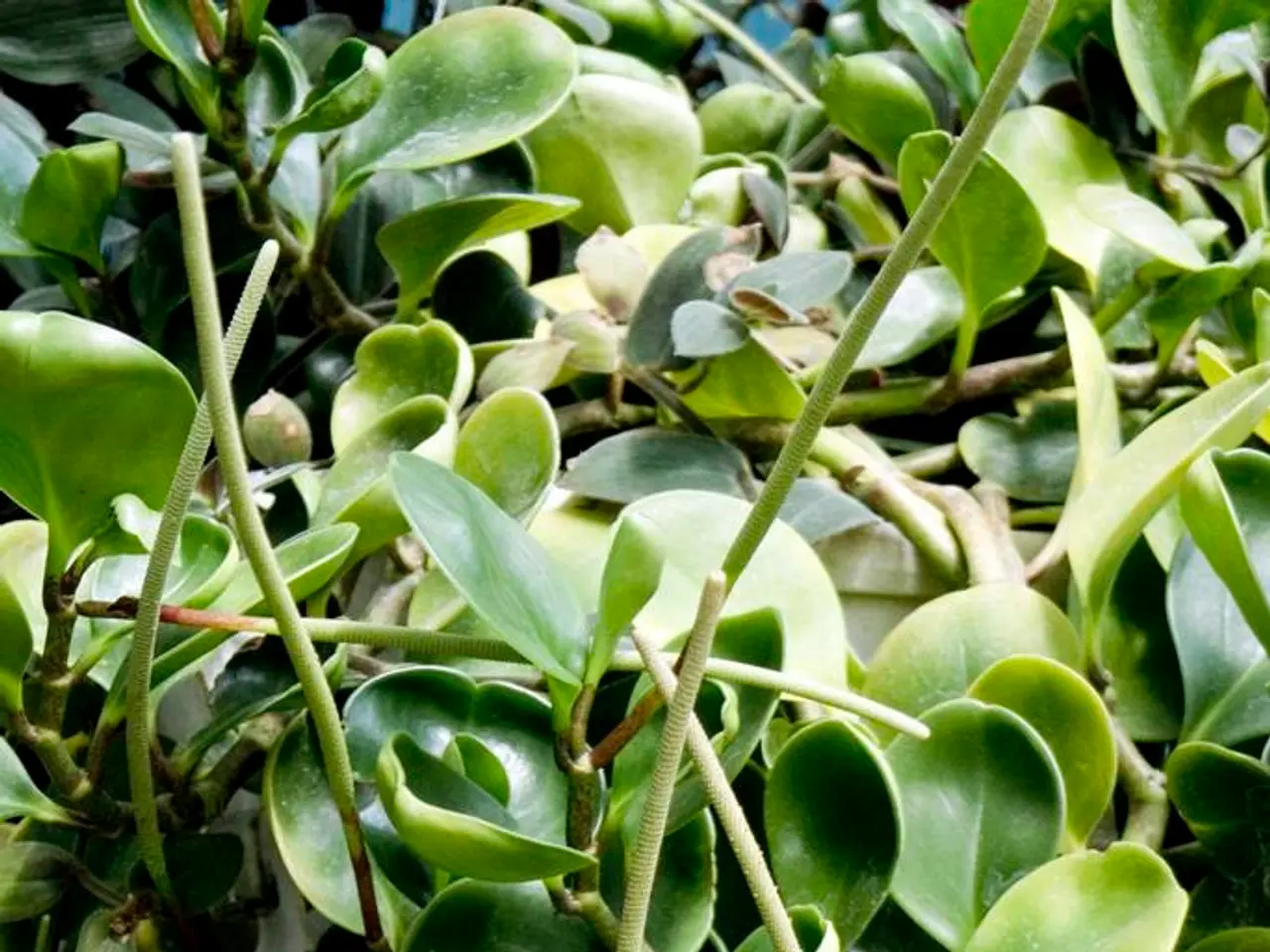Guide on Properly Hydrating a Terrarium - Expert Advice
In the world of terrarium gardening, finding the perfect balance of moisture is key to maintaining a thriving ecosystem. Here's a practical guide to help you determine the optimal watering frequency for your terrarium setup.
Firstly, let's discuss watering terrarium plants. For common terrarium plants like Pothos, it's best to water when the top inch of soil feels dry. Overwatering is a common issue with terrarium plants, so allowing the soil surface to dry before watering again is essential [1][5].
Another crucial factor to consider is the internal condensation of the terrarium glass. Once there is no more condensation on the glass, it often signals that it's time to water again. For many closed terrariums, this can mean watering as infrequently as once a year, depending on the setup and plant type [4].
Humidity levels within the terrarium also play a significant role in watering needs. Maintaining humidity levels between 50-70% helps balance moisture [5]. Using a humidifier or water tray nearby can assist, but overwatering should be avoided to prevent root problems.
The type of plant and the environment where the terrarium is kept will influence how quickly moisture evaporates and when the soil dries out. For example, warmer, drier, or sunnier locations require more frequent watering [6].
Air plants (Tillandsia), often kept in terrariums, benefit from thorough watering once a week with supplemental misting as needed. They should be allowed to dry fully after watering to avoid rot, and watering frequency increases in hot, dry conditions [2][3].
Practical guidelines for watering a terrarium include checking the soil moisture regularly, observing internal condensation of the terrarium glass as a natural moisture gauge, adjusting watering frequency with changing seasons or indoor climate, ensuring proper drainage to prevent water pooling, and misting rather than pouring water directly onto the plants [7].
Remember, every terrarium requires different watering frequencies. Some plants, like Fittonia, are more sensitive to watering and can wilt at the first sign of dryness. A substrate with high water retention and good drainage is crucial for most tropical plants in a terrarium [8].
Water straight from the tap isn't ideal for terrariums due to chlorine and salts. Reverse osmosis water, distilled water, and deionized water are suitable alternatives for terrariums, with deionized water being the most affordable option [9].
In a closed terrarium ecosystem with an effective water cycle, condensation should be visible throughout the container at certain points throughout the day. If no condensation is visible throughout the top of the terrarium, it's a strong sign of little to no humidity and likely insufficient water in the system as a whole [9].
By combining these observations—soil dryness, condensation presence, and plant species needs—you can determine the optimal watering frequency tailored for your terrarium setup. Often, this ranges from weekly to minimally once a year in well-balanced closed terrariums [4][5].
Happy gardening!
To ensure a healthy home-and-garden lifestyle within your terrarium, always check if the top inch of soil feels dry before watering common terrarium plants like Pothos. Additionally, maintaining a lifestyle that includes observing the internal condensation of the terrarium glass can help determine the right time for watering, which for many closed terrariums might even be once a year.




